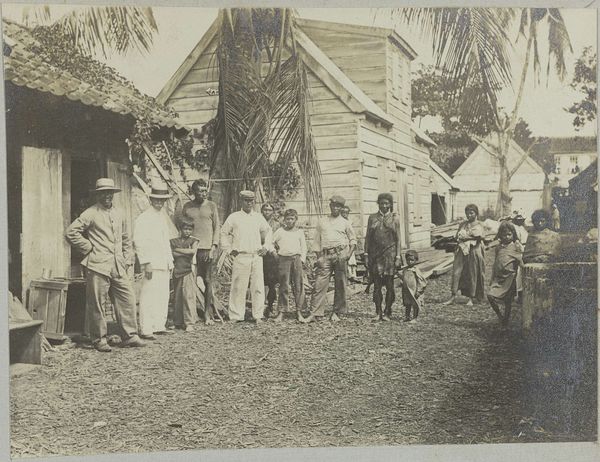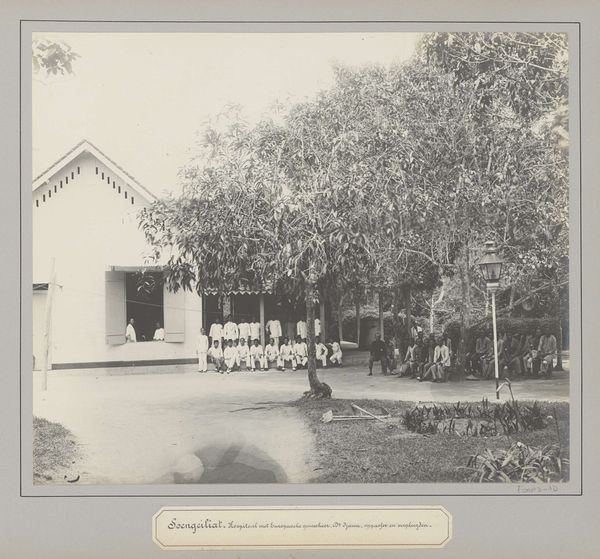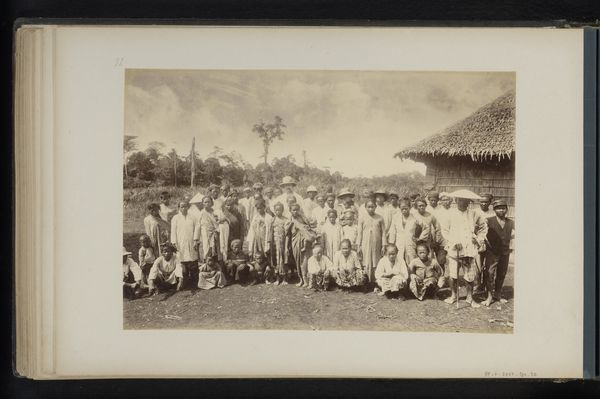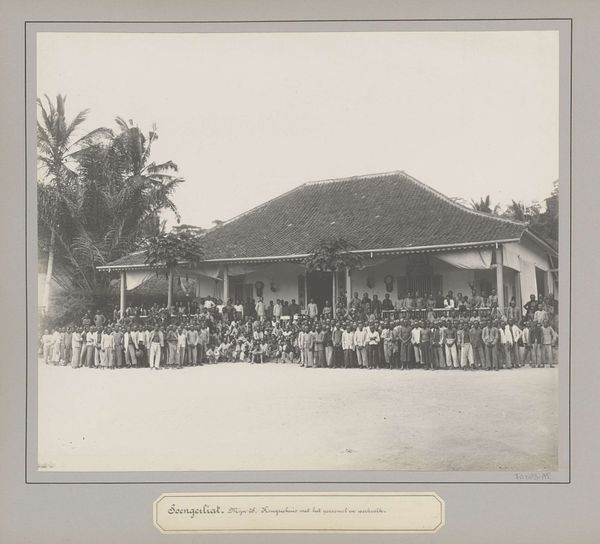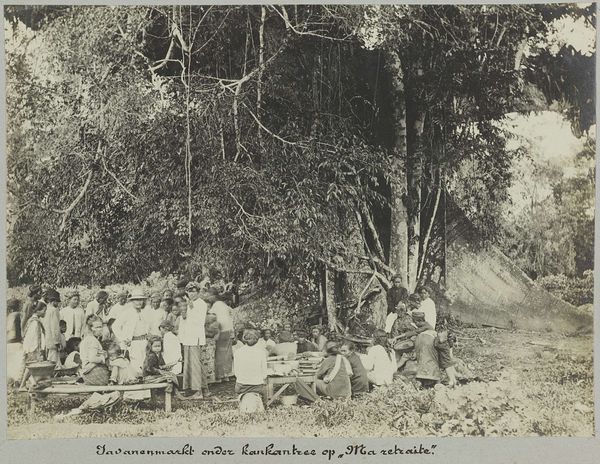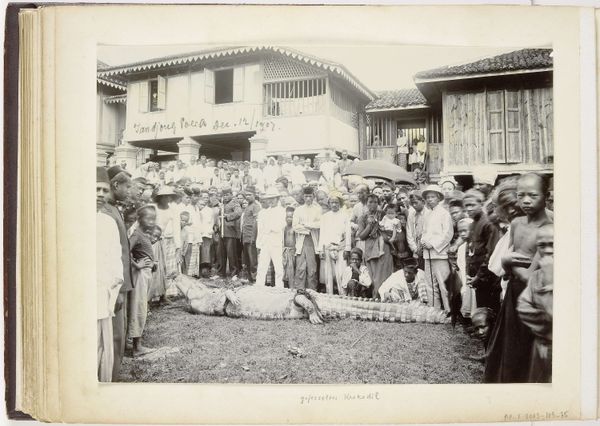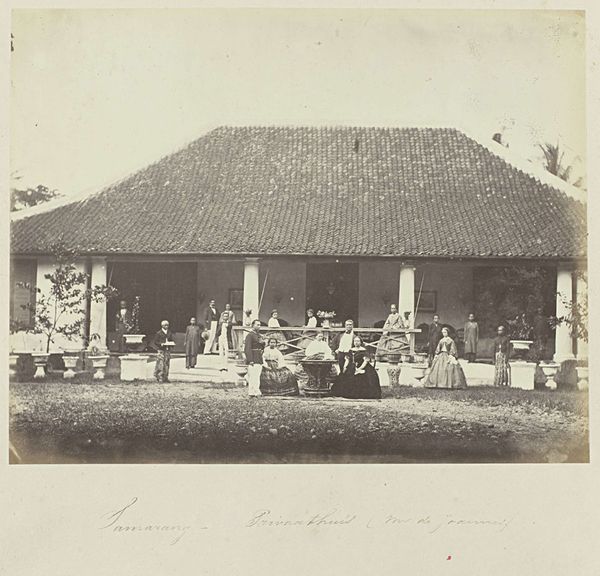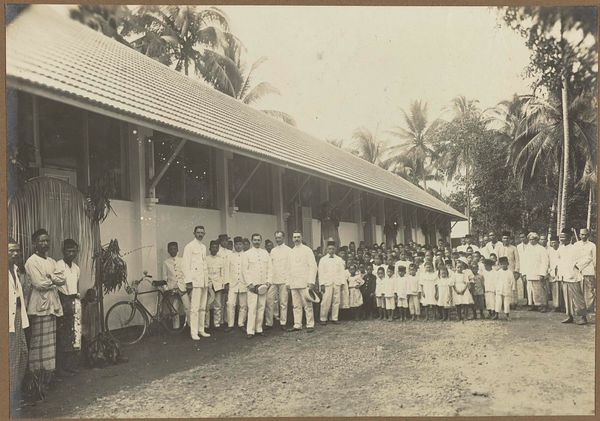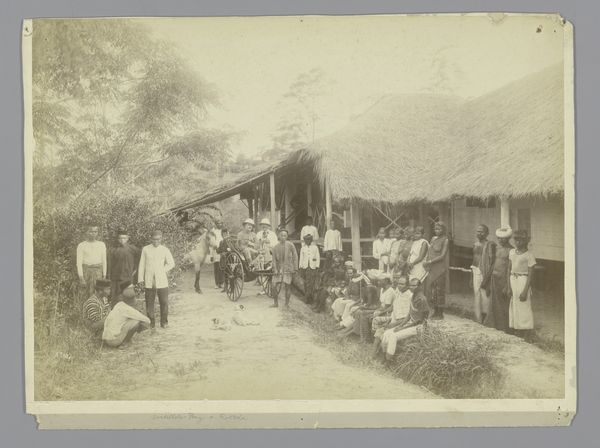
photography
#
portrait
#
photography
#
photojournalism
#
ancient-mediterranean
#
orientalism
Dimensions: 24.2 x 30 cm (9 1/2 x 11 13/16 in.)
Copyright: Public Domain
Curator: Emile Gsell’s "Prince Cambodgien et son Cortège", dating from 1866, offers a compelling glimpse into Cambodian royal life through the lens of early photography. It's currently held at the Metropolitan Museum of Art in New York. Editor: You know, the sepia tones give it a wistful quality, almost dreamlike. The composition is fascinating—so formal, almost staged, yet you feel like you’re witnessing something intimate. Curator: Gsell, we must remember, was a keen observer of the means and materials for capturing and documenting his subjects. Look closely at the texture; the physical print itself offers incredible insights into the period’s photographic processes and the social context of image-making and distribution during colonial expansion. Editor: Absolutely! The light is just gorgeous; how it falls across the faces in the procession and illuminates that small but ornate platform carrying the Prince. What stories they could tell... if photography had only found its voice back then. Curator: Indeed. I think about the labor that went into every stage – preparing the photographic plates, developing the print, and even the social labor that allowed a Western photographer access to such a royal gathering. The composition highlights the social hierarchies being performed and reinforced in that moment. Editor: The very act of capturing this moment transforms it, right? Almost like taxidermy—trying to hold something ephemeral, turning the prince and his cortege into specimens of an "exotic" East. How problematic but telling at once. Curator: It is a tightrope walk between observing and participating in colonial practices. However, examining how images like this circulated allows us to understand more deeply the ways that knowledge about distant cultures was consumed by the West. Editor: I see, by studying not just what the photo shows, but what it took to produce it, we get to something far deeper about the period it captures. Beautiful—and complicated. Curator: Exactly. I appreciate the chance to revisit this with you today. It's been instructive, if somber. Editor: Indeed!
Comments
No comments
Be the first to comment and join the conversation on the ultimate creative platform.

